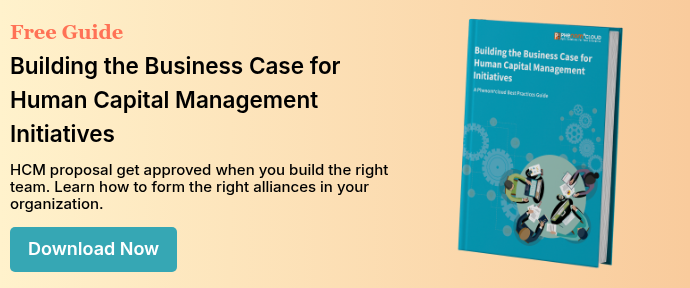
With the move to unified cloud technologies for human capital management, companies are enjoying the benefits of having all customers on the same code base, running the same processes. It’s easy to rationalize inadequate testing -- we are testing a software platform used by thousands of people every day. We can also be victims of what we call usability bias when the user experience is so smooth and easy we assume it is operating to our specifications.
Lack of diligence in testing can affect your business. In our experience in cloud software projects over the past fifteen years, we have seen an occasional client give testing short shrift in spite of our advice. We saw the result when they called us in a panic as things didn’t work as they intended.
In addition, not all implementation partners are alike. Some may be experts at testing, and others may only provide general guidance. If you do not have expertise in testing cloud platforms, you may wish to engage an expert testing partner.
Regardless of what resources you use, your project team should take a disciplined approach to testing.
- In your project risk assessment, cite the potential impact of inadequate or incomplete testing. Doing this will alert everyone to the importance of resource allocation to doing it well.
- Create a comprehensive testing plan that requires reporting the test results before project signoff.
Testing Plan
The testing plan is a document that describes the scope, objectives, and governance of the testing process. It will help everyone understand the effort and resources required and provide an action plan that assigns responsibilities for executing it.
We have presented here our five steps to thorough testing. We hope it helps you on your way to a successful implementation.
-
1. Analysis
Describe each function of the platform, who will use it, and how. Your information sources will be end users, subject experts, product documentation, and a product walk-through. Be sure to include information on how functions are integrated and where master data for each data set will reside.
-
2. Strategy
The strategy is the detailed description of how you will execute testing activities. It includes scope, methods, risks, and resources.
Scope. The purpose of describing the scope is to inform stakeholders what you will test. Testing will be primarily functional, and will not include hardware, infrastructure, and load testing. It will include functions, processes, user interfaces, notifications and communications, outputs, and the dozens or hundreds of configuration decisions you will make during the implementation.
Include also what you will not test and why. This information may be valuable to people who have not experienced a cloud implementation.
Methods. This aspect includes not only how you will test, but what testing you will automate. For example, you will likely use automation to test data integrations and manual testing for a self-service employee record change.
Risks and Issues. The risks you face will include the availability and expertise of testers, experience and expertise of managers and administrators, and the availability and cost of resources. Include a mitigation plan for each risk.
Logistics. The who, where, and when of testing.
- Detailed automated testing plan, including costs, timelines, and reporting.
- Who will do the manual testing. Testers should be ending users familiar with the processes they are testing. They should not be people who took part in the design and configuration. The setup experience is likely to influence their judgment. You are aiming for high user adoption, and you can only achieve that with testers who mirror the target population.
- Location, equipment, and communication.
- The timeline. Get a commitment from managers to support manual testing for the entire duration.
-
3. Objectives
The objectives, or entry criteria, are the functions, activities, and use cases you will test. Some testing, such as parallel payroll runs, will be involved and dependent on other tests. Others, such as an employee name change, will be simple. Each one is important.
Brainstorm with your experts to uncover every possible use case, then prioritize and sequence them. Include negative testing by attempting errors that users will make. Make note of mistakes the application does not handle and include them in your reports.
-
4. Test Criteria
Define an expected outcome for each action and establish a triage procedure. You will not want a dozen testers reporting the same issue, and you will want to exercise judgment over how critical an issue is. Establish guidelines for deciding whether an issue should be corrected before you can proceed or if it should wait for the next iteration.
-
5. Deliverables
Establish what deliverables required before, during, and after each testing phase. These will include:
- Planning and design documents
- Use cases and scenarios
- Logs and triage reports
- Reports and conclusions
A Final Thought
You may be tempted to find a template and plug your situation into it. We recommend caution. Every business is different, and templates and guides such as this one are not prescriptions. Before we could discuss such a solution, we would need to know a lot more about how you operate your business.
Your human capital management implementation will touch every person in your organization. A well-disciplined approach to testing will pay dividends in lower costs, better user adoption, and higher return on your investment.

PhenomᵉCloud is a full-service technology company dedicated to helping clients solve business problems, improve the capability of their people, and achieve better results.


Leave a Comment